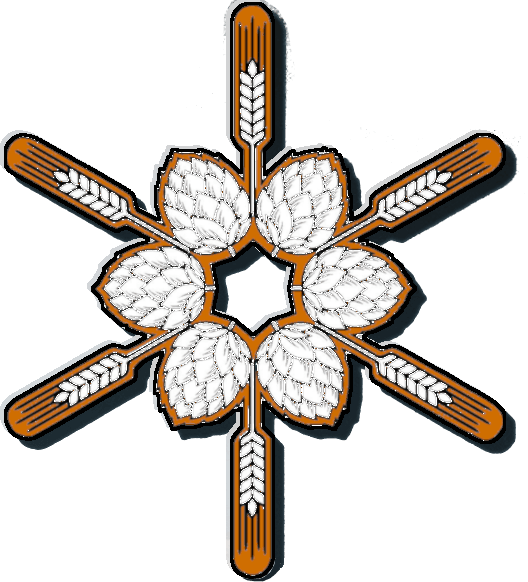By Matt Burling
Marquette Michigan – Brewing beer has many different approaches. Depending on your level of interest and commitment you can choose a variety of different tools, ingredients and methods to arrive at the beverage you wish to produce. The three main methods to brew beer from a home brewing perspective are extract, partial mash and all-grain. They do however all share common themes; combine water, malt, hops and yeast to create beer. These have varying degrees of difficulty and basically allow you either basic or complete control of your finished product.
I’m going to go a little bit into what each process grants you and give you some DIY projects that allow more interested people to get into the more involved all-grain brewing.
Extract Brewing
Extract brewing is the first process most home brewers start with. It is a fairly bare bones approach to brewing. Here you take containers of pre-steeped and concentrated malt in the form of ‘extracts’ and add them to water. When you combine the water and malt this now becomes what brewers call ‘wort’. The wort is then boiled for usually an hour to rid it of unwanted yeast and organisms. During the boil you also add your hops at different times to allow the bittering agents (alpha acids) to go into the wort. The longer the hops are in the boil, the more bitterness you will get. This is basically called hop utilization.
After the boil is done the wort is then chilled, yeast added (pitched) and sealed off in a clean container with an air lock as quickly as possible to reduce the chance of wild yeast and bacteria getting into the beer. This is when fermentation happens and after about two weeks you can bottle with some additional sugars (priming sugar) to create carbonation. Extract brewing has had a bit of a negative connotation from the home brewing world in the past due to sub par malt extracts only being available during the home brewing boom in the 80s and 90s. But nowadays we have excellent quality extracts and a growing variety to choose from.
Partial Mash
The partial grain method uses all of the concepts from extract brewing but before the boil you steep in some specialty grains to adjust the profile of the wort. These specialty grains include chocolate, black, crystal, wheat, rye and many others.
All-Grain Brewing
In all-grain brewing you take on the preparation and steeping of grains along with the rest of the brewing. The steeping process is called mashing and requires special equipment called a mash tun. This vessel allows the brewer to hold the grains soaked in water at a certain temperature for usually a period of about an hour. After the hour you ‘mash out’ and then by a few different procedures rinse the grain with additional water to allow more sugars to flow out, this is called sparging. After all this you are left with a wort that is ready to be boiled.
The creation of a mash tun can be relatively easy and cheap. Most homemade vessels are constructed with a water or picnic cooler that can be picked up most anywhere. The conversion process requires very little tools and extra parts. Most, if not all, parts can be picked up at a local hardware store. This basically requires you to take the cooler and create a drainage field within the casing to allow the steeped mash (wort) to drain out. Here are a couple of example builds and walk-throughs that show explain in detail what you need and how to complete the process:
https://www.youtube.com/watch?v=m9wJr7c1F4I
http://www.onemansbeer.com/diy-mash-tun-build/
Another commonly used tool of a homebrewer is a wort chiller. Like I stated before, when you’re done with a boil you want to chill the wort as quickly as possible to reduce the risk of wild yeast and bacteria from infecting your beer. This is easier with something like an immersion chiller. One of the easiest and cheapest routes to construct an immersion chiller is to get a length of copper tubing, usually around 25 feet, twist it in a spiral manner and put plastic tubing fittings on each end to allow easy hook-up and drainage of water. Here is an excellent example of how to build one: http://www.homebrewtalk.com/diy-cost-effective-immersion-wort-chiller.html
The last DIY project I have for you is a bit more of a preference. A hop spider is an apparatus that allows you to boil your hops in the wort without leaving a bunch of leftover particles and material (trub) behind. This simple idea only requires you to suspend a piece of water permeable material in the wort while it is boiling. This allows you to add your hops into the bag to be able to soak into the wort but when the boil is done it can be removed and all hop trub with it. Some research has been done into whether or not getting this type of trub out of the beer before it is fermented is actually beneficial but most examples point to this being mostly a personal preference. A great example of hop spider is here: https://byo.com/build-it-yourself/item/2427-build-a-hop-spider-projects
So in the end brewing, like most hobbies, is all about how much you want to put into it and what you expect to get out of it. These three examples can help you in the various methods of brewing but in the end they’re just tools. The final products that you come up with are entirely up to you. Happy brewing, kippies!
Check out more great articles on craft beer & homebrewing by the Marquette Home Brewers:
- A Sustainable Approach To Homebrewing
- Exploring Belgium Beer
- Why To Try a “Craft Beer”
- So You’re Not a Hop Head

